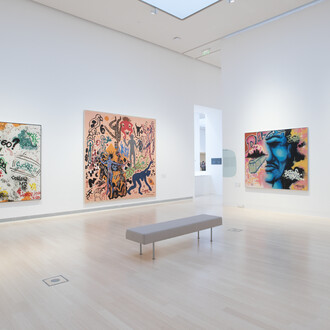This exhibition is situated on the first floor of the Gothic wing. The first large room presents the history of hunting in Hungary from the Hungarian Conquest of the Carpathian Basin to the present day.
The panels placed alongside the row of windows display hunting memorabilia in a chronological order, including mediaeval and modern prints, charter reproductions, pictures, paintings from the 18th century, and photographs from the late 19th century. Under the panels the showcases present a brief, limited survey of hunting weapons from the crossbow to the automatic rifle, as well as hunting tools (daggers, knives, powder flasks, cartridge making instruments and other equipment). The middle-class hunter is brought closer to the modern visitor with the interior of a hunting room, furnished according to the taste of the turn of the 19th-20th centuries.
The corner room is an apse not just architecturally, but acts as the sanctuary of the exhibition as well. This is where current and former world record setting trophies can be seen.
The great hall presents modern hunting. Its characteristic hunting atmosphere is based on the stylistic arrangement of gold award bearing antlers of stags and fallow deer, which are the representative items of the museum’s collection. The other part of the trophy show can be found at the opposite wall of the great hall: a group of excellent deer, wild boar and mouflon trophies, with the original deer antler from Martonvásár, which set the world record for 18 years, between 1965 and 1983.
The exhibition ‘Hunting in Art’ opened in July 1997, in the small rotunda between the hunting and fishing exhibitions. In this smaller room we give a taste of the works of several Hungarian artists; with three exceptions all of them are contemporary. On a separate easel rests the unfinished painting entitled ‘Wild Boars’ by the world-famous Hungarian hunter-painter, Pál Csergezán (1924–1996).
















